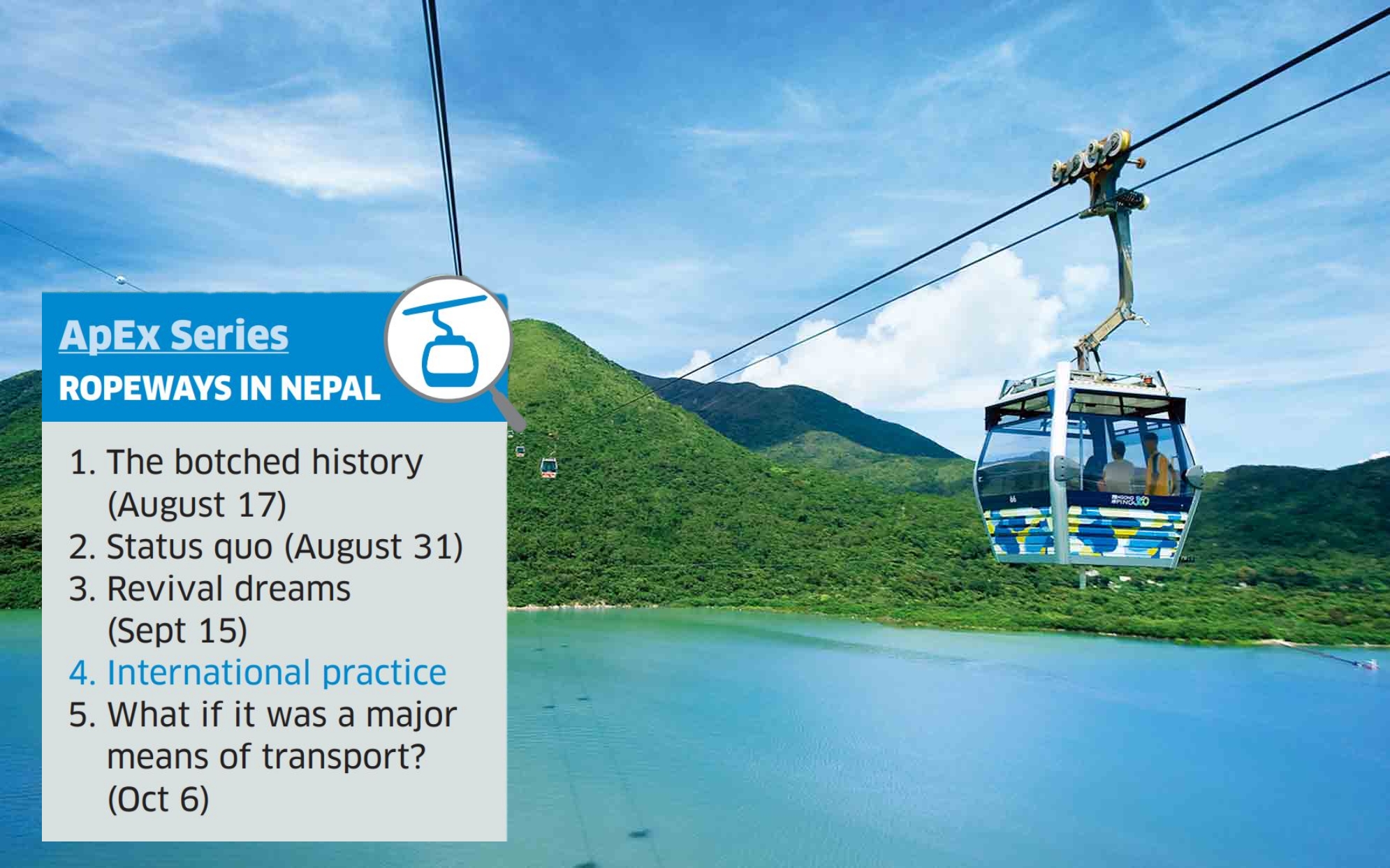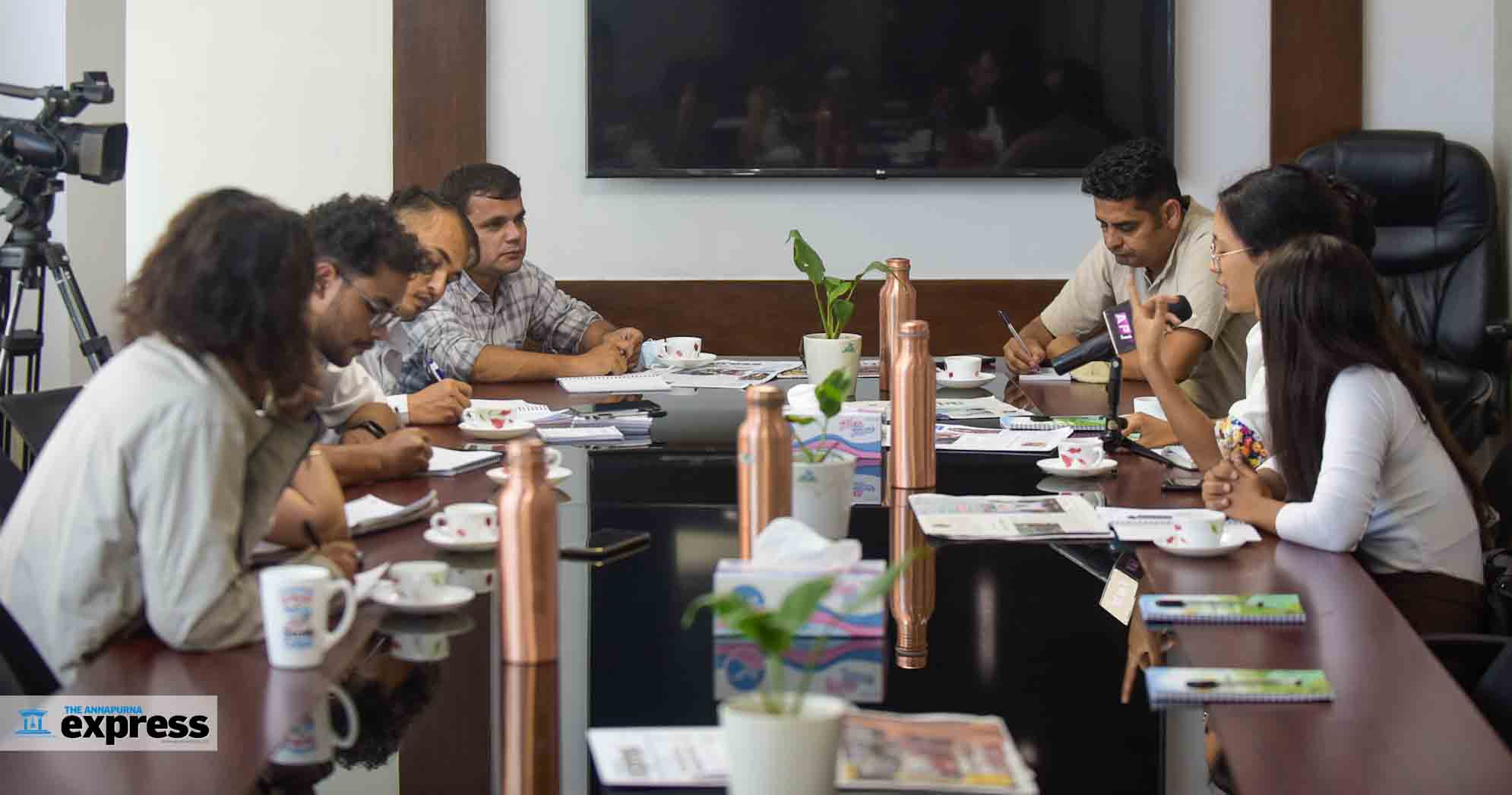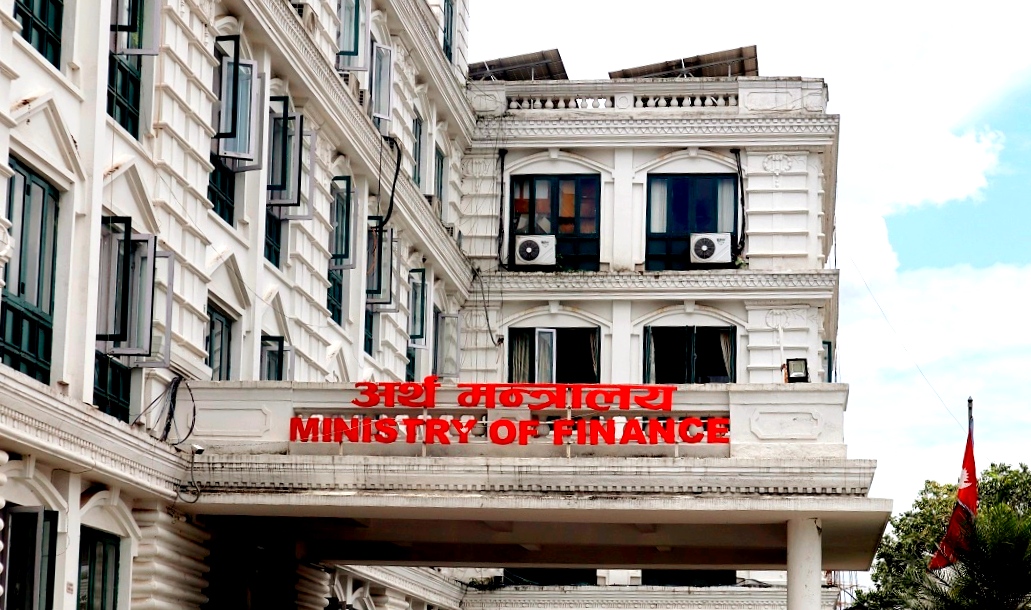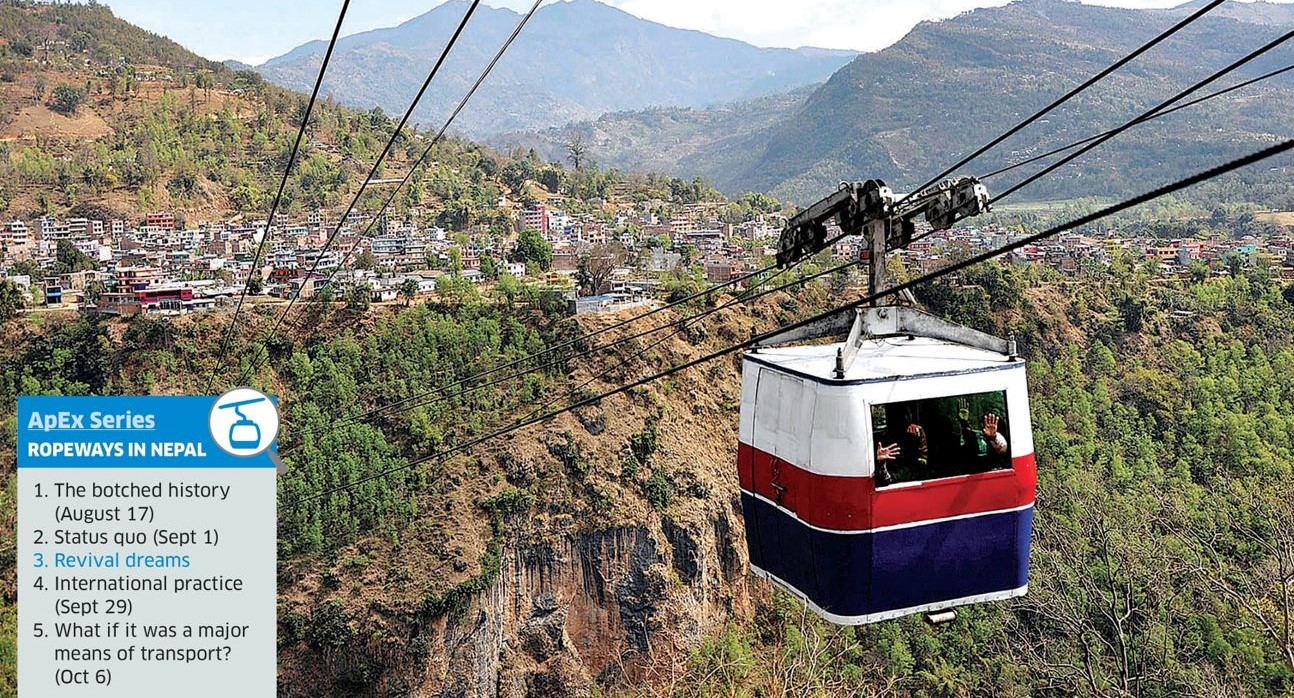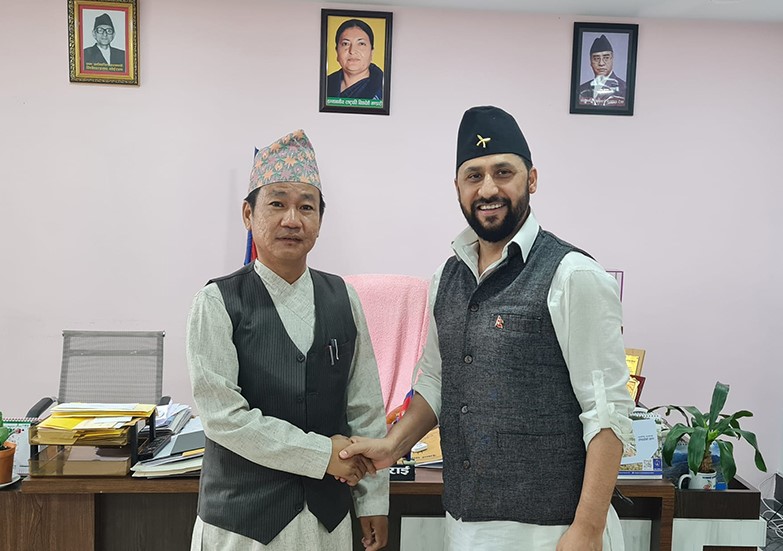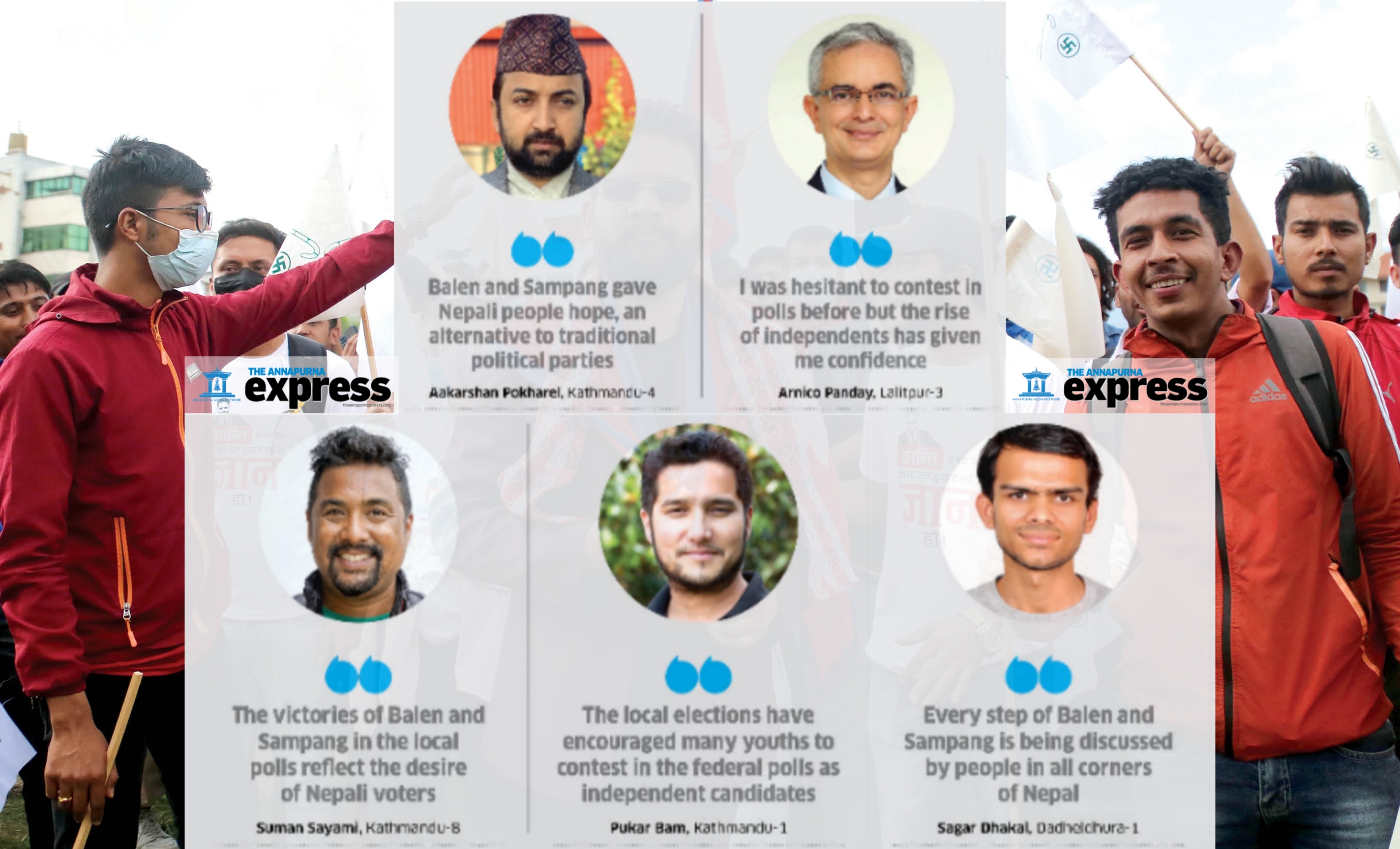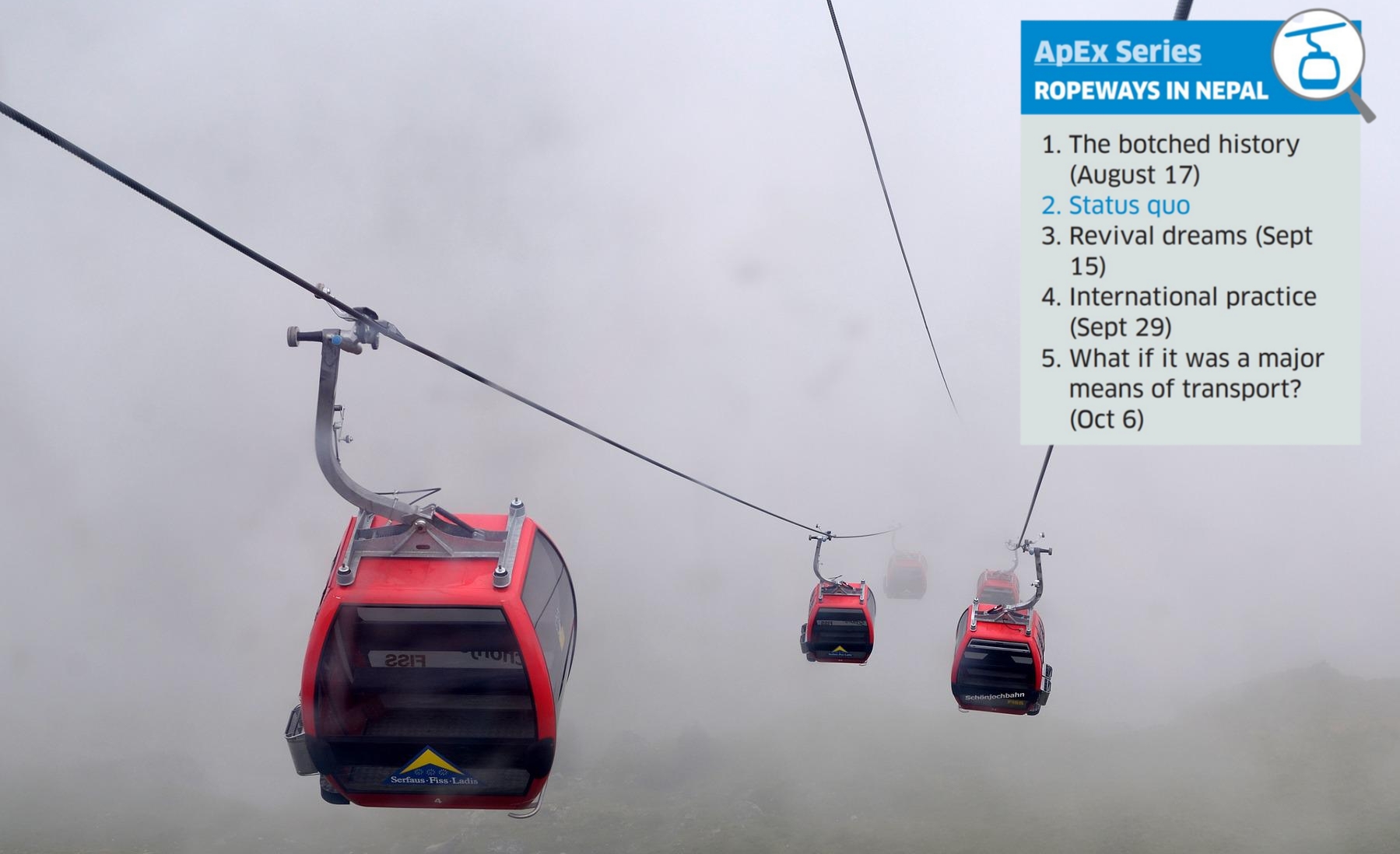ApEx Series: International ropeway practices and lessons for Nepal
When Bir Bahadur Ghale, a local of Barpak village in Gorkha, went to Hong Kong in 1986, he was fascinated by the cable cars he saw there. They were a convenient way of transporting goods and people in hill areas. Ghale returned home with the dream of building a ropeway in his village. His dream came true in 1998 when the British Embassy in Kathmandu in cooperation with the Intermediate Technology Development Group (ITDG-Nepal) agreed to help with a goods-carrying ropeway in Barpak.
The ropeway connected Rangrung and Barpak—villages separated by a two-day hike—and had an immediate impact on the people and the local economy. Every day, three tons of goods were transported to Barpak. The ropeway made an average of 20 trips a day between 10 am to 5 pm and generated an average daily gross income of Rs 1,500. In the book, ‘Ropeways in Nepal,’ Ghale mentions that the selling price of transported goods dropped by Rs 2-3 a kg (and even more) after the ropeway came into operation.
The neighboring villages of Laprak and Gumda also benefited from the ropeway. But the ropeway was shut down just four months into its operation after four people riding in the goods carriage died when the ropeway’s hauling cable snapped.
Also read: Nepal’s most iconic ropeways—now abandoned
Ghale says the ropeway was not meant for transporting passengers but the villagers did not listen. Over the years, Nepal has seen many ropeway systems fall out of favor or discontinued, even though they have a great potential. Hong Kong and Switzerland are two fine examples where ropeways are being used as a form of transport in challenging topography where building roads is expensive and fraught with risks. Venezuela, Canada, Bolivia, China, Malaysia, Brazil, and the European countries have set world records on ropeways with their technology and service. Nepal can learn a lot from these countries and become less ‘road-obsessed’ and employing more practical solutions to transport and travel.
Toni Hagen, renowned Swiss geologist and an expert in Nepal’s geology, mentions in ‘Ropeways in Nepal’ how Nepal could learn from Swiss ropeway. After obtaining independence from colonial rule, he writes most developing countries embarked on a single-focus program of road construction without considering more economic alternatives. Switzerland, on the other hand, modernized its transportation system using a mix of railways, roads, and ropeways.
Also read: High in potential, low in execution
Its balanced policy fostered the development of a judicious blend of transport technologies suitable to specific areas in the Swiss Alps and meeting economic requirements. The Swiss Alps have historically been a formidable barrier to transport. The building of trails across the mountains to facilitate the transport of pack animals started in the 13th century, when Swiss democracy began, although some trails must have existed much earlier, in Roman times.
“Nepal could learn much not only from its example but also from the examples of other mountain-blessed countries that have promoted the development of ropeways,” writes Hagen. But barring some ropeway and cable car projects, all of them privately launched, Nepal government has never seriously considered the form of transport that could not only save the cost of expensive road projects in the hill and mountain areas, but also spur economic activities in remote hinterlands. Building ropeways can also be a way to promote tourism in Nepal.
Also read: Is ropeway revival possible?
In Australia, for instance, a ropeway has been opened that crosses scenic coral reefs, tropical forests and mountains to end at a fashionable hill resort that has no access road. Malaysia, too, has several scenic tourist ropeways to reach resort centers on mountaintops that are not served by access roads. In the Kathmandu Valley, aerial ropeways could start at the outskirts of town, at the Ring Road encircling Kathmandu. These ropeways could also promote treks of one or two days in the beautiful hills around the outer rim of the Kathmandu Valley.
The great potential for establishing hotels in the Kathmandu Valley has so far been unexploited, but Nepal, like Switzerland and Hong Kong, has spectacular aerial ropeway rides to offer. On all continents, fruit plantations, mining enterprises, and many other industries use a great number of ropeways to transport goods. But Nepal lags behind in this front. The development of transport in Nepal has been quite different. Major highways are built and even repaired by foreign contractors. If national contractors are involved, they are mostly Kathmandu-based. Even to construct remote feeder roads in the districts, central agencies such as the Department of Roads (DoR) are involved.
Moreover, the roads are in notoriously bad shape. Ropeway experts say Nepal has great potential for opening up its poor but beautiful hinterlands to international tourists, yet roads are the only way to get there. They say the construction of roads without attention to protecting the environment ruins beautiful scenery. “If Nepal had hired experts in destroying unique tourist sites and mountain scenes, they could not have done better,” Hagen writes in the book to make his case for ropeways in Nepal.
A study suggests that building ropeways is six times cheaper than roadways. The cost of maintenance is also minimal. Yet, the government is reluctant about this mode of transport. There is no government agency for ropeway promotion. To build a ropeway, one is put through a series of approval process and bureaucratic rigmarole. To install a ropeway for people transport in Nepal, an investor has to get approval from 21 different government authorities. Reports suggest that the country could have ropeways in nearly 2,000 areas. But only five ropeways for human transport and almost a dozen gravity goods ropeways are currently in operation.
Vijay Kant Karna: Ruling coalition will fare well in Madhes
The ruling coalition of Nepali Congress, CPN (Maoist Center), Janata Samajbadi Party (JSP), CPN (Unified Socialist) and Rastriya Janamorcha Party are busy negotiating seats for the upcoming elections to the federal parliament. The main opposition, CPN-UML, meanwhile, is seeking to forge electoral alliance with fringe parties, especially in Madhes. Pratik Ghimire of ApEx talked to political analyst Vijay Kant Karna to know what he thinks holds for the parties in Madhes in the Nov 20 polls.
How do you think the ruling coalition will settle the seats in Madhes?
Considering the population of 20 districts in the Madhes belt, it does not have enough constituencies. There are around 75 seats from the region, and the top leaders of the ruling coalition have been meeting regularly for a seat-sharing deal. Initially, they seemed to have a formula to divide the constituencies, that those who had won in the 2017 parliamentary elections would get the respective constituencies. But the Nepali Congress is reluctant to do so because many of its leaders would not get election tickets. The JSP has asked for 16 out of 32 seats in Madhes Province, but my prediction is that the party will settle for 12 or 14 seats. The Congress will have the second most number of seats followed by the Maoists. It has been easy for the major partners in the ruling coalition to negotiate with the JSP since the other major Madhes-based party, Loktantrik Samajbadi Party (LSP), is not in the alliance. Also, the JSP has no valid grounds to claim the seats won by LSP in the 2017 polls.
Will the ruling coalition outshine other political parties in the Madhes region?
It would have been no problem for the ruling coalition to get perfect election results if the ruling coalition had won all the seats in the Madhes region in the local polls. But that is not the case. They should convince their provincial leaders and cadres if they are to win all the seats in the federal polls. If the influential leaders do not get the election tickets, there will be many rival candidates who will split the votes. It all depends on how these parties will manage the alliance and their intra-party disputes. Yet, the chances of the ruling coalition performing better in the Madhes region are good compared to other parties.
Where does the UML stand in Madhes?
UML Chairman KP Oli recently visited Madhes and tried to convince the voters. A few of the leaders from other parties have also joined the UML in recent times. But the UML position on the bill to amend the Citizenship Act and the move of the president not to authenticate the bill could affect the party’s election outcome. Many Madhesi voters are not pleased with what happened with the bill.
Is there any hope for small parties and independent candidates?
I don’t think so. There are no real independent candidates in Madhes that I can think of. They are either established politicians who have changed or quit the party due to intra-party disputes. In the local election, too, a couple of candidates from the Janamat Party of CK Raut won the election. This victory was not due to the party’s organizational strength, it was due to the popularity of the candidates among voters. They would have won from whichever party. The same happened when Manoj Sah won the mayoral seat in Janakpur. He was a popular local Congress leader but his party did not give him the election ticket. So, he contested as an independent candidate and won. Remember, he was already an established politician. So, unlike in Kathmandu, Madhes is yet to see the rise of purely independent candidates.
Are the Madhes agendas still relevant for the voters?
The Madhes agendas will never be irrelevant for the voters in the region. But for the political parties, it will be difficult to collect votes by advocating those agendas as they had done in the 2017 polls. The Madhes-based parties did not get the votes in the previous election so that they can expand their bargaining power while forming government. The voters wanted their representatives to advocate for their agendas in parliament. So, yes, the Madhes agendas are still relevant to the voters. But whether they trust the political parties to champion those agendas is a different issue entirely.
ApEx Roundtable: Where do Nepali youths stand on climate issues?
The government has been working to finalize the agendas for the COP27 climate conference, which will take place in Sharm el-Sheikh, Egypt, on 6-18 Nov. It has been holding consultations with wide-range of stakeholders. In this context, ApEx organized a roundtable session with youth climate activists to solicit their views. Here is an excerpt of what they had to say:
Same set of people participate in climate conference
Saurav Dhakal, Co-founder, Story Cycle
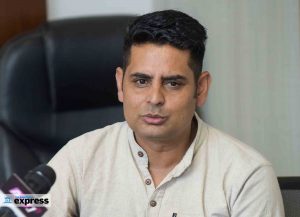
The issue of climate change should be analyzed at four levels: individual, community, national, and international. The individual approach is all about behavioral change and sustainable practice. At the community level, local governments are supposed to intervene. The national level means the government’s responsibilities and the international level is about multinational programs and discussions. But our approach at all these levels is minimal. Our government has no clear focus. For example, our prime minister has committed to achieving net zero emissions by 2040 and at the same time, the government is planning to extend the petroleum pipeline. These two plans clash with each other.
At the international level too, our presence is unnoticeable, and we have barely benefited from international facilities. To make our voice heard at COP climate summit and other international forums, our homework should be strong and for that, our institutions must be strong. We also need climate negotiation but our issues and agendas should be bold and research-based. Bhutan has been doing well in this regard. It is impossible to have a diverse discussion so long as the same set of people represent Nepal at the climate conference. Civil society members, youths, researchers, and climate activists should also get the opportunity to attend the event. There is also a lack of coordination at the ministry level. The government programs on climate are often Kathmandu based and they never include wide stakeholders. We only get to learn about the government agendas on climate via social media. This has to change.
Indigenous people should join international dialogue
Mega Maskey, Network Coordinator, Harin Nepal

The world has a 1.8bn youth population. Almost 40 percent of Nepal's population is youth. So, we have a great power, which we must utilize to implement climate action. And in many terms, we have already carried our responsibility. Global strikes for climate, for instance, are mainly mobilized and led by the youths. We have held the world governments accountable. But despite all the contributions, youths are barely given a chance in governmental and international climate forums. Our participation is minimal and sometimes, we are invited just to fulfill the youth quota. There is youth participation in COP climate summits, but as an audience, not as negotiators.
When it comes to negotiations and delegations, it's always the same old politicians and bureaucrats. Essentially, youths have no meaningful participation. In COP26, only 13 of the 75 Nepali participants were female. There should be more inclusive participation. Those who have felt and lived with climate change impacts, such as indigenous people, should join the international discussions. I believe they could better express the situation. Their participation will also be a sort of symbolic protest against developed nations and major contributors to carbon emissions.
People working at the grassroots level are always ignored
Sagar Koirala, Youth Ambassador, Youth for Nature
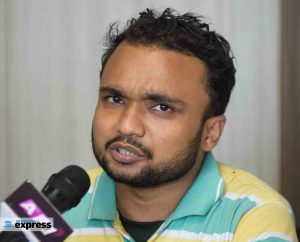
Nepal is one of the most vulnerable countries in terms of climate change. While many Nepali youths have started working for climate advocacy, mainly on climate finance and loss and damage, they still lack support from the government. The government and other concerned authorities should team up with the youths to combat the climate crisis. Nepal’s share in global carbon emissions is only 0.1 percent, yet we are facing heavy brunt of climate change. We should focus on climate- and environment-friendly policies, but the government has been doing the opposite.
It is conducting petroleum extraction feasibility in Dailekh and Palpa districts and introducing counterproductive policies such as tax hike in electric vehicles. There are many people who work at the grassroots level to fight against climate change, but they are not getting any support or recognition. They have more knowledge on climate adaptation, but they are rarely consulted or invited for national or international climate discussions. At least, COP climate conference should be inclusive if we were to bring up the real agendas.
Transfer of knowledge is missing
Monica Neupane, President, Climate Nepal
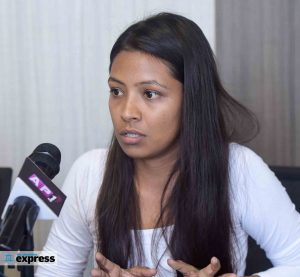
This year, for the first time, I am going to participate in the COP27 climate summit, but I am yet to know how things will go there. I have no idea about the process of negotiations and any other things that a participant needs to know. I have been trying to figure these things out without any success. I believe this is due to the ignorance of our governmental bodies. They should have trained us, so that we could raise our voice too. The participants of previous years have not been able to pass on their experience and knowledge to the youths. I have been working for climate education with schools. A student in Sindhupalchok drowned in a river recently while going to school.
The water levels in the river have gone up, which can be attributed to climate change. But the local people are not aware of this. They are facing the impacts of climate change on a daily basis. If we could only educate them, it will help them prepare for further crises. This is particularly true for the younger generation. Here too, there is a gap in knowledge. It is not being passed down. The government needs to update the school curriculum. In terms of climate change, there are a lot of things to add.
What happens in COP27

- COP27 will be a moment for countries to fulfill their pledges and commitments toward delivering the objectives of the Paris Agreement to enhance the implementation of the convention.
- This year should witness the implementation of the Glasgow pact call to review ambition in NDCs, and create a work program for ambition on mitigation.
- This summit should witness enhanced global agendas for action on adaptation, confirming what was agreed on in Paris and further elaborate the Glasgow pact with regard to placing adaptation at the forefront of global action.
- The summit will follow the progress on delivery of the annual $100bn to build more trust between developed and developing countries, showing that actual commitments are being fulfilled.
- Enhancing and facilitating agreement in the negotiations is of the utmost importance for the Presidency of COP27 to achieve tangible results in a balanced manner.
Nepal’s economy shows no signs of recovery
Nepal’s economy is struggling due to depleting foreign exchange reserves and soaring inflation. It has approached international financial institutions for a bailout, joining the likes of Pakistan and Bangladesh, who too are hard-pressed to shore up their faltering economy. As a measure to maintain its forex reserves, the Nepal government has curbed the import of so-called luxury items.
As a result, according to Nepal Rastra Bank, imports shrank by 12.9 percent between Aug 15 and Sept 19. Meanwhile, remittance inflows have increased by 20.3 percent to Rs 92.21bn in the review period against a decrease of 17.4 percent in the same period last year. Officials say while foreign currency reserves are still going down, thanks to the import restrictions, they are sufficient to last for prospective merchandise import of 9.4 months, which had fallen to six months in March. But Nepal is not out of the woods yet.
Economist Chandra Mani Adhikari says there is still a risk of a full-blown economic crisis, as all parameters have not been performing well. “Merchandise exports are still surging which is likely to go up during the upcoming festival season,” he says. “Then there is the November election that could further strain the economy.”
Economist Dilli Raj Khanal is also not hopeful about economic recovery in the immediate future. “The stopgap measure of restricting import cannot sustain for long.” The private sector warns that prolonging import restrictions could discourage foreign investment and fuel unemployment, thus hurting the economy even more. Ramping up domestic production and export is one way to save the economy.
Current scenario
· Inflation stands at 8.26 percent
· Imports decreased 12.9 percent, exports decreased 28.7 percent
· Trade deficit decreased 10.4 percent
· Remittances increased 20.3 percent and increased 12.5 percent in USD terms
· Balance of payments remained at a deficit of Rs 22.63bn
· Gross foreign exchange reserves stand at $9.42bn
· Federal Government spending amounted to Rs 22.26bn
· Revenue collection Rs 79.72bn
ApEx Series: Is ropeway revival possible?
This year marks the centenary of the start of ropeway in Nepal. Renewable Energy Confederation of Nepal (RECON), Nepal Ropeway Association, USAID and other relevant institutions are planning to celebrate the 100 years by holding seminars on the importance, relevancy, and revival of ropeway technology in Nepal. They are planning to conduct the seminars in all seven provinces and invite the concerned government representatives. They hope these events will push the government authorities to rethink the revival of ropeway transport in Nepal.
The government so far has shown no interest in developing ropeway system in Nepal. Tulsi Gautam, spokesperson for the Ministry of Physical Infrastructure and Transport, says, “The government as of now has no plans to commission a ropeway project on its own.” This is despite the fact that the government is aware of the ropeway’s potential in Nepal and its suitability in terms of both cost and practicality.
Several studies on ropeway potential in Nepal suggest the country could have ropeway transports in nearly 2,000 areas and feasibility studies have also been conducted in 62 of these locations. To date, there are only five ropeways for human transport and almost a dozen gravity goods ropeways are in operation in Nepal. The book ‘Ropeways in Nepal’ by Dipak Gyawali, Ajaya Dixit, and Madhukar Upadhya recounts many past success stories of Nepali ropeway projects, but the idea of developing ropeways to ease the problem of transporting goods and humans has simply not registered on the minds of the government officials and ministers.
“The fact is the government officials and ministers do not get much commission from ropeway development unlike road projects,” says Gyawali, who is also a former water resource minister. After the success of pioneering ropeway projects, the government incorporated plans and policies for improving and extending the existing ropeway services in the fifth Five-Year Plan. With grant assistance from the US government, the old 22-km long, low-capacity mono-cable system between Dhorsing and Kathmandu was replaced and extended with a 42-km-long bi-cable ropeway between Hetauda and Kathmandu. The sixth Five-Year Plan proposed developing gravity ropeways in the hills and mountains to transport daily goods and Rs 6m was allocated to execute the plan, but nothing came of it.
After the restoration of multi-party democracy in the 90s, the eighth Five-Year Plan incorporated ropeway under the sub-sector of ‘other modes of transport’ and announced a program for consolidating the existing ropeways and operating them at full capacity. There was also the plan of encouraging the private sector for the development of short-haul ropeways to promote tourism as well as developing gravity ropeways. For these purposes, the government of the time allocated Rs 158m. The next national plan announced a more ambitious 20-year National Transport Master Plan that included a cable car/ropeway development program and privatization of ropeway transports so that they could be operated more effectively.
The approach paper of the 10th Five-Year Plan (2002-2007) again stated that policies for developing ropeway transportation would be adopted. It also set the aim of encouraging private entrepreneurs to construct and operate cable car/ropeways in places with importance for tourists and local economies where road access is lacking. Priority for cable car/ropeway development would be accorded to those areas where the cost of constructing and operating roads would be comparatively high.
Experts say though policies and modest-scale programs were incorporated in Nepal’s Five-Year Plans, the progress over the years have been slow. In fact, they add, the ropeway development plan has more or less remained stagnant since 2007. Its potential to become an important segment of the country’s transport system was not realized. Post 2007, the Five-Year Plans had no mention of policies on ropeway development.
Upadhyay, the co-author of ‘Ropeways in Nepal’, says Nepal is in the 15th Five-Year Plan, but for the last two decades, there has not been any progress on ropeway development. Like Gyawali, he too is the view that the political leadership is deliberately ignoring the ropeway potential because they do not get any financial gains. “If the government ministers and politicians agree to build ropeways instead of roads, they cannot earn commissions.” Upadhya, who was in-charge of building the Bhattedanda ropeway, adds unlike ropeways, roads need to be maintained regularly, which brings in large funds for politicians and contractors.
Experts say ropeways can be a viable solution for not just transporting goods and people, but also in the process of managing municipal waste. Guna Raj Dhakal of Ropeway Nepal Pvt Ltd says the system could be utilized to transport the waste generated in Kathmandu Valley. “There has even been a study on this issue, but there was no follow up. The plan never took off.”
Gyawali says the ‘Ropeway in Nepal’ was launched in presence of the then ministers and officials from the National Planning Commission (NPC) and that they know the ropeway could transform Nepal, but they are still not comfortable with the idea. “This simply reflects the unwillingness of the government towards sustainable and cost-effective development ideas,” he adds. To date, the NPC has not started any discussion on the feasibility of ropeways. Asked why, the commission member, Uma Shankar Prasad had no answer.
The new challengers
Call it ‘Balen effect’ or ‘Sampang effect,’ many young and educated people have declared their independent candidacies for the November elections, and the old-established parties feel unsettled. The groundswell of urban voters’ support to independent candidates in the May election has made parties realize they cannot risk fielding political stooges and placement in the upcoming polls.
Anthropologist Laya Prasad Uprety says the wave of independent candidacies in local and national elections is a sign that Nepali voters, mostly youths, are deeply disenchanted with the established political parties. “Since 1990, Nepali political parties have failed to work for the interest of people. And many of today’s young generation see these parties and their leaders as part of the problem,” says Uprety. “That is why we are seeing a rise in independent election candidates.” Political analyst Lok Raj Baral has a different thought regarding the rise in independent candidates.
He says there is a significant difference between local and federal elections. “Yes, the effects of Balen and Sampang’s victory in the local elections might sway some voters to pick independent candidates, but it cannot make that much of a difference to hurt the established parties.”
Full story here.
Balen and Sampang effect in federal elections
On Aug 29, CPN (Maoist Center) Chairman Pushpa Kamal Dahal said at a public function that his party was seeking candidates who could gain sentimental votes in the November 20 elections to the federal and provincial assemblies. “Balen won the same way,” he said, referring to the unprecedented victory of the incumbent Kathmandu mayor in the May 13 local polls.
The rapper turned independent mayoral candidate, Balendra Shah had defeated the candidates from major political parties. Following Dahal’s remarks, there was a rumor that the Maoist party was considering Kulman Ghising, managing director of Nepal Electricity Authority, who is credited for resolving the problem of perennial power cuts in the country, as one of its candidates for the November polls. Ghising has since refuted the rumor, but there is a deep significance to Dahal’s statement.
Call it ‘Balen effect’ or ‘Sampang effect,’ many young and educated people have declared their independent candidacies for the November elections, and the old-established parties feel unsettled. The groundswell of urban voters’ support to independent candidates in the May election has made parties realize they cannot risk fielding political stooges and placement in the upcoming polls.
Suman Sayami has declared his candidacy for a federal parliament seat from Kathmandu-8. He is a prominent Newa rights activist and heritage conservationist, who had also run as an independent mayoral candidate for Kathmandu Metropolitan City back in May. He says Nepali people want progressive, independent candidates who can establish rule of law and good governance.
“The victory of Balen and Sampang in the local polls reflects the desire of Nepali voters.” Sayami is also the coordinator of ‘Lauro Campaign’, a loose alliance of independent candidates who have been lobbying to get ‘Lauro’, the election symbol of Balen and Sampang, as their election symbol for the November polls. Pukar Bam, another independent candidate from Kathmandu-1, says the outcome of local elections in cities like Kathmandu and Dharan show that people are tired of traditional political parties.
“The local elections have encouraged many young people to contest in the federal elections as independent candidates,” he adds. Bam was a campaigner for the ‘Enough is Enough’ protest movement against the KP Oli government’s poor handling of the Covid-19 pandemic. He believes there is a good winning probability for independent candidates after they have agreed to form alliances in some constituencies. “Previously, there were over two dozen independent groups who were planning to contest the upcoming elections,” says Bam. “After we agreed to forge alliances, the number has come down to three.” 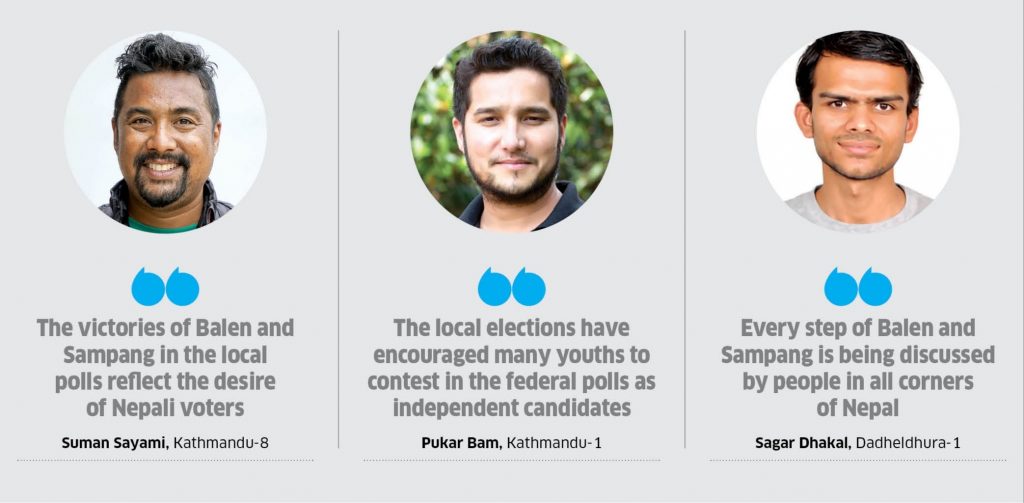 Sagar Dhakal is another hopeful independent candidate, who has declared his candidacy from Dadeldhura-1, the hometown of Prime Minister Sher Bahadur Deuba. Dhakal, who came to limelight after a heated exchange with Deuba on live TV in 2017, is a hydro-mechanical engineer by profession. He says Balen and Sampang have offered hope to Nepali people that all is not lost. “Every step of Balen and Sampang is being discussed by people in all corners of Nepal,” he says.
Sagar Dhakal is another hopeful independent candidate, who has declared his candidacy from Dadeldhura-1, the hometown of Prime Minister Sher Bahadur Deuba. Dhakal, who came to limelight after a heated exchange with Deuba on live TV in 2017, is a hydro-mechanical engineer by profession. He says Balen and Sampang have offered hope to Nepali people that all is not lost. “Every step of Balen and Sampang is being discussed by people in all corners of Nepal,” he says.
“This is entirely a new phenomenon and it gives hope and encouragement to independent candidates.” Political analyst Lok Raj Baral has a different thought regarding the rise in independent candidates. He says there is a significant difference between local and federal elections.
“Yes, the effects of Balen and Sampang’s victory in the local elections might sway some voters to pick independent candidates, but it cannot make that much of a difference to hurt the established parties.” He believes that if someone is going to change Nepali political culture that is independent groups who are not affiliated to any established political parties. Aakarshan Pokharel, a civil engineer turned politician has already announced his candidacy in Kathmandu-4, against the general secretary of the Nepali Congress Gagan Thapa.
“Balen and Sampang gave Nepali people a hope, an alternative to traditional political parties,” says Pokharel. “These two mayors are being widely hailed by the public. The perception of voters towards independent candidates has changed.” Arnico Panday, an independent candidate from Lalitpur-3, also gives credit to Balen and Sampang for his decision to run in the November elections. “I had thought of contesting in parliamentary elections before, but I was hesitant then. The rise of independent candidates has given me confidence.”
Panday is an expert on environmental science and public policy. It is important for Panday and his fellow candidates that Nepali people outvote the old, outdated political candidates. They want the candidates with a clear vision to win, not those with unnecessary political agendas. “Nepal needs people-centric leaders.” Balen and Sampang have also proved that election campaigning should not necessarily be an expensive affair. They believe that the most important thing is for the candidate to connect with the voters by visiting their homes and neighborhoods. “I am not in favor of expensive election campaigns and promotion,” says Dhakal. “I am instead visiting the communities in my constituency and explaining my agendas to them.” 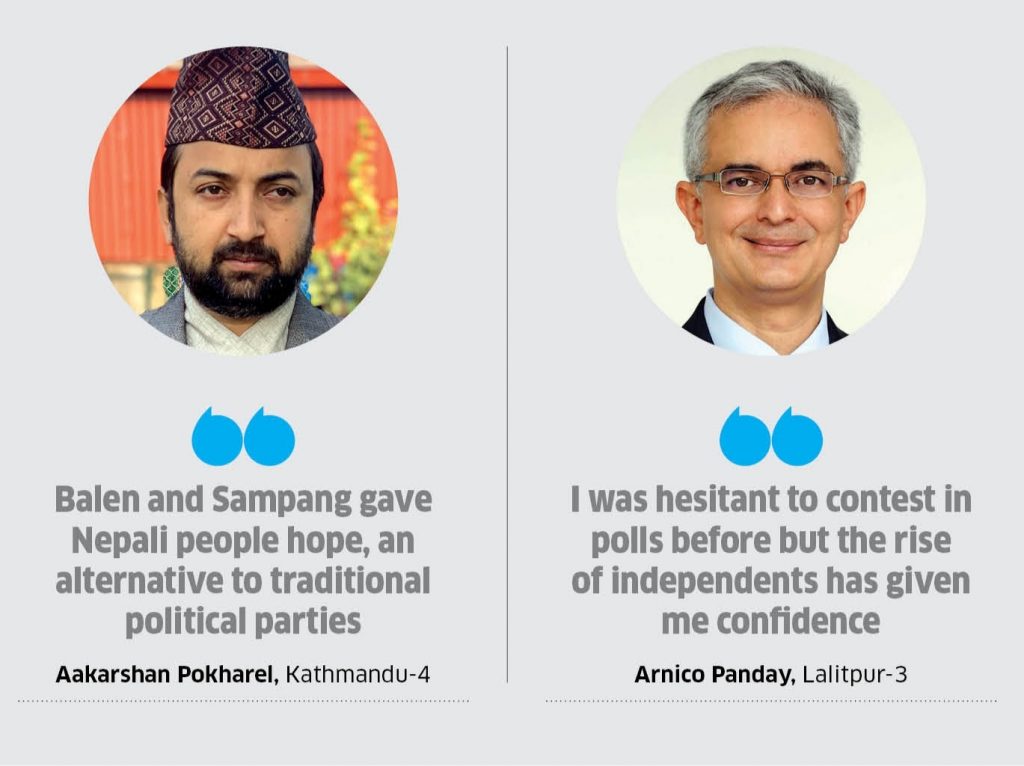 Anthropologist Laya Prasad Uprety says the wave of independent candidacies in local and national elections is a sign that Nepali voters, mostly youths, are deeply disenchanted with the established political parties. “Since 1990, Nepali political parties have failed to work for the interest of people. And many of today’s young generation see these parties and their leaders as part of the problem,” says Uprety. “That is why we are seeing a rise in independent election candidates.”
Anthropologist Laya Prasad Uprety says the wave of independent candidacies in local and national elections is a sign that Nepali voters, mostly youths, are deeply disenchanted with the established political parties. “Since 1990, Nepali political parties have failed to work for the interest of people. And many of today’s young generation see these parties and their leaders as part of the problem,” says Uprety. “That is why we are seeing a rise in independent election candidates.”
Uprety, however, adds that the global historical precedence suggests that independent candidates could never become an alternative to established political parties. “At the moment, young Nepalis think voting for independent candidates is the way to go, which I wholly support, but in the long run, we need political parties.” Uprety says the voting pattern this time will be different than previous elections, as the result of local elections has projected few independent wins in federal polls. “The established political parties have already realized this. We have to see how they will pick their candidates.”
Manushi Yami Bhattarai, who has been lobbying for her candidacy from Kathmandu-7, is happy with emerging independent candidates. “This trend has rattled the major political parties, which is a good thing.” Bhattarai, who is the daughter of former Prime Minister Baburam Bhattarai, believes if independent candidates were to win in the upcoming elections, political parties will be forced to improve. “I believe in a multi-party democracy, but I also support independent candidates,” she says. “It will help our democracy.”
ApEx Series: Let there be ropeways
Ropeways are an ideal means of human and goods transport in Nepal, a country filled with rugged mountains and hills. In fact, installing ropeways are six times cheaper than building roads. Yet there has been little interest in their development. Studies suggest Nepal could have up to 2,000 ropeways and feasibility studies have been completed on 62 of them. So what accounts for the paucity of ropeway carriages zipping over our hills and valleys?
The lengthy bureaucratic process is one problem. For instance, for an investor to build a ropeway, he or she has to get permits from 21 different government agencies. Cable cars—of the kind we see in Manakamana and Chandragiri—are also a kind of ropeway. The Manakamana cable car was first established in 1998. Quickly, the economy and job prospects of the surrounding areas were transformed. There could be no clearer case of a high social return on investment. Yet it would be another two decades before another cable car company came into operation. Surprisingly the government has taken no initiative to expand the reach of ropeways and cable cars. Private companies are doing all the heavy lifting.
This is a case of misplaced priorities. Politicians have forced people to see longer and wider roads as synonymous with development, despite the enormous environmental and financial costs incurred in the process. The cable car system could also be mighty useful in urban hubs. “Our politicians have been pitching for metro-rail and monorail to ease Kathmandu valley’s traffic congestion,” says Guna Raj Dhakal, chairperson of Ropeway Nepal Pvt Ltd. “But a cable car system could address the problem of urban mobility even better.” There is also ample scope, all around Nepal, for the ropeways that exclusively transport goods. Unlike the people-carrying cable cars, they don’t need that many permits to operate as well.
Read full story here.


